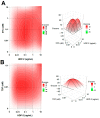Anti-HIV Activity of Snake Venom Phospholipase A2s: Updates for New Enzymes and Different Virus Strains
- PMID: 35163532
- PMCID: PMC8835987
- DOI: 10.3390/ijms23031610
Anti-HIV Activity of Snake Venom Phospholipase A2s: Updates for New Enzymes and Different Virus Strains
Abstract
Since the beginning of the HIV epidemic, lasting more than 30 years, the main goal of scientists was to develop effective methods for the prevention and treatment of HIV infection. Modern medicines have reduced the death rate from AIDS by 80%. However, they still have side effects and are very expensive, dictating the need to search for new drugs. Earlier, it was shown that phospholipases A2 (PLA2s) from bee and snake venoms block HIV replication, the effect being independent on catalytic PLA2 activity. However, the antiviral activity of human PLA2s against Lentiviruses depended on catalytic function and was mediated through the destruction of the viral membrane. To clarify the role of phospholipolytic activity in antiviral effects, we analyzed the anti-HIV activity of several snake PLA2s and found that the mechanisms of their antiviral activity were similar to that of mammalian PLA2. Our results indicate that snake PLA2s are capable of inhibiting syncytium formation between chronically HIV-infected cells and healthy CD4-positive cells and block HIV binding to cells. However, only dimeric PLA2s had pronounced virucidal and anti-HIV activity, which depended on their catalytic activity. The ability of snake PLA2s to inactivate the virus may provide an additional barrier to HIV infection. Thus, snake PLA2s might be considered as candidates for lead molecules in anti-HIV drug development.
Keywords: antiviral activity; human immunodeficiency virus; phospholipase A2; pseudovirus; recombinant form; retrovirus; snake venom; syncytium.
Conflict of interest statement
The authors declare no conflict of interest. The funders had no role in the design of the study; in the collection, analyses, or interpretation of the data; in the writing of the manuscript; or in the decision to publish the results.
Figures






Similar articles
-
Insights into the antiviral activity of phospholipases A2 (PLA2s) from snake venoms.Int J Biol Macromol. 2020 Dec 1;164:616-625. doi: 10.1016/j.ijbiomac.2020.07.178. Epub 2020 Jul 19. Int J Biol Macromol. 2020. PMID: 32698062 Free PMC article. Review.
-
Snake venom phospholipase A2s exhibit strong virucidal activity against SARS-CoV-2 and inhibit the viral spike glycoprotein interaction with ACE2.Cell Mol Life Sci. 2021 Dec;78(23):7777-7794. doi: 10.1007/s00018-021-03985-6. Epub 2021 Oct 29. Cell Mol Life Sci. 2021. PMID: 34714362 Free PMC article.
-
Secreted phospholipases A(2), a new class of HIV inhibitors that block virus entry into host cells.J Clin Invest. 1999 Sep;104(5):611-8. doi: 10.1172/JCI6915. J Clin Invest. 1999. PMID: 10487775 Free PMC article.
-
Expression, purification and virucidal activity of two recombinant isoforms of phospholipase A2 from Crotalus durissus terrificus venom.Arch Virol. 2019 Apr;164(4):1159-1171. doi: 10.1007/s00705-019-04172-6. Epub 2019 Feb 26. Arch Virol. 2019. PMID: 30809709
-
Snake venom phospholipase A2 inhibitors: medicinal chemistry and therapeutic potential.Curr Top Med Chem. 2007;7(8):743-56. doi: 10.2174/156802607780487614. Curr Top Med Chem. 2007. PMID: 17456038 Review.
Cited by
-
Molecular docking of eleven snake venom peptides targeting human immunodeficiency virus capsid glycoprotein as inhibitors.Open Vet J. 2024 Nov;14(11):2936-2949. doi: 10.5455/OVJ.2024.v14.i11.22. Epub 2024 Nov 30. Open Vet J. 2024. PMID: 39737016 Free PMC article.
-
Antiviral Effects of Animal Toxins: Is There a Way to Drugs?Int J Mol Sci. 2022 Mar 26;23(7):3634. doi: 10.3390/ijms23073634. Int J Mol Sci. 2022. PMID: 35408989 Free PMC article. Review.
-
Egyptian cobra (Naja haje haje) venom phospholipase A2: a promising antiviral agent with potent virucidal activity against simian rotavirus and bovine coronavirus.Arch Microbiol. 2022 Jul 27;204(8):526. doi: 10.1007/s00203-022-03139-7. Arch Microbiol. 2022. PMID: 35895237 Free PMC article.
-
Thermostable chaperone-based polypeptide biosynthesis: Enfuvirtide model product quality and protocol-related impurities.PLoS One. 2023 Jun 8;18(6):e0286752. doi: 10.1371/journal.pone.0286752. eCollection 2023. PLoS One. 2023. PMID: 37289764 Free PMC article.
-
Genomic, transcriptomic, and epigenomic analysis of a medicinal snake, Bungarus multicinctus, to provides insights into the origin of Elapidae neurotoxins.Acta Pharm Sin B. 2023 May;13(5):2234-2249. doi: 10.1016/j.apsb.2022.11.015. Epub 2022 Nov 17. Acta Pharm Sin B. 2023. PMID: 37250171 Free PMC article.
References
-
- Keele B.F., Giorgi E.E., Salazar-Gonzalez J.F., Decker J.M., Pham K.T., Salazar M.G., Sun C., Grayson T., Wang S., Li H., et al. Identification and characterization of transmitted and early founder virus envelopes in primary HIV-1 infection. Proc. Natl. Acad. Sci. USA. 2008;105:7552–7557. doi: 10.1073/pnas.0802203105. - DOI - PMC - PubMed
Publication types
MeSH terms
Substances
Grants and funding
LinkOut - more resources
Full Text Sources
Medical
Research Materials

